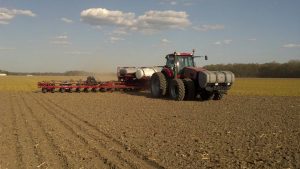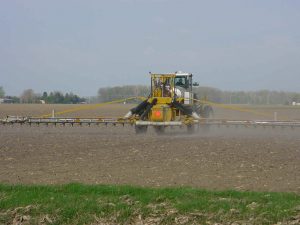Remember The Basics When Getting Back To Planting
By Andy Westhoven, AgriGold Regional Agronomist, CPAg, CCA
I realize it is now mid-May and plenty of corn and soybean fields have been planted, but the feeling of planting crops when the markets have rallied is a beloved feeling by all. Another common sentiment with higher commodity prices is the willingness to try something new or different. If you are willing to step outside the box, please remember some of these general basics.
The planter is the most important pass of the season and no one enjoys a redo. Make sure to focus on the three key principles for germination: 1) uniform soil temperature, 2) uniform soil moisture, 3) consistent seed to soil contact. Oh, and plant two inches deep! (Couldn’t help myself.) If you have not finished planting your crops, one lesson we have learned in recent years is the ability to plant late (into June) and still reach respectable yields. Many years I have seen growers mud corn/beans in April that seem to get by ok in the end. The same cannot be said for May planting (the Rule of May). Almost every time, if the conditions are not right, you will pay all season. “Plant into a warming trend” is a common (but hardly achieved) statement made each spring. The reason behind this statement is the importance of the first 24 to 48 hours after the seeds are planted. The first step in germination is to imbibe water. If that is a cold drink, it can send a shock to the seed and cause chilling injury which could affect the stand and reduce germination. If it is a warm drink and the three principles of germination (mentioned above) are followed, high germination and emergence should soon follow.
When it comes to weed management, do not skimp. This warm spring season allowed many winter annuals to thrive. Cutting rates or eliminating products during this management step should never be considered. With higher prices, this is the time to throw in the extra layer of control to help stave off the mid-season weeds.
With higher prices, this is the time to throw in the extra layer of control to help stave off the mid-season weeds.
During the growing season, many growers like to spoon-feed the crop with foliar pesticides and multiple nitrogen applications. This might be the year — better than ever before — to really focus on the trips that pay. While almost all products will claim 4 to 5 bushels for corn and 2 to 3 bushels for soybeans, we really need to focus on practices that produce return on investment. Try to improve the areas that are limiting your crop — be it nitrogen, extra potassium, boron, etc. Not all products are made equal so be sure to do your homework.
I realize we are a long way off from spraying fungicides, but to continue the journey, for many growers this is an annual event. It bears repeating, focus on return on investment. For soybeans, I have considered spraying fungicides a must for years. The payback is typically there with an average bump of 8 to 10 bushels (if not more). For corn, my stance has changed throughout the years. I used to focus on hybrid, crop rotation, weather, etc. While those criteria are still important, I have shifted my criteria to yield environment first. If the field has a yield potential over 200 bushels, then I am heavily leaning towards spraying. I understand there are situations where this changes (i.e. too far north, dry down and limited/no grain storage, etc.). While fields that yield under 200 bushels might still pay, they usually are more variable and have other yield-limiting factors than diseases. Fields over 200-bushel potential certainly are more consistent and also have more yield to protect and bushels to add. There are many secondary advantages observed from spraying tassel-app fungicides and they can certainly add to the bottom line.
Overall, stay the course, but try to experiment with something new that you have always wanted to try. Base your decisions on science and not fluff. This is the year to make bushels and capitalize on these markets.